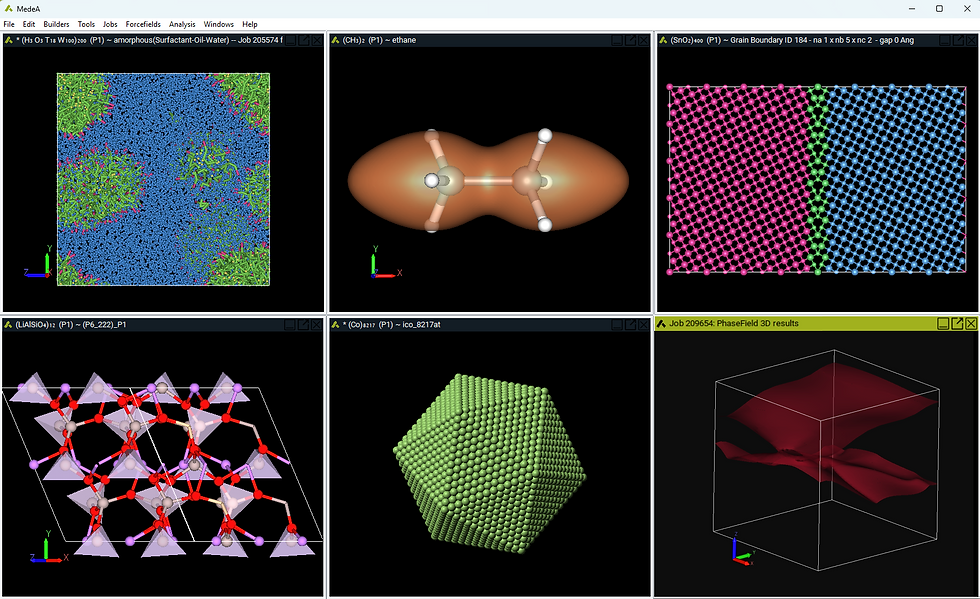The Materials Design, Inc. 2017 Annual User Group Meeting
- Katherine Hollingsworth
- Oct 6, 2017
- 3 min read

The 2017 UGM Dinner- in Strasbourg's Maison Kammerzell restaurant (built in 1427)
The Materials Design, Inc. 2017 Annual User Group Meeting was held on September 19-21 in the heart of Strasbourg. The meeting included a hands-on training session, a focused scientific symposium, and many opportunities for technical discussion and debate.
Ray Shan, Hannes Schweiger, and Rene Windiks conducted the training workshop employing a combination of formal and free format practical teaching sessions. Additional technical expertise was provided by Walter Wolf, Volker Eyert, Philippe Ungerer, Mikael Christensen, Xavier Rosanska, David Reith, Dave Rigby, Jonathan Bell, Martijn Marsman, Bruce Eichinger, Krzysztof Parliński, and Marianna Yiannourakou; and technical discussions ranged from the use of correlative methods in predicting molecular properties to the optimal procedures for the creation of realistic atomistic thermoset models, among many other topics.
As always, the scientific program provided the center-piece for the meeting, and as always the caliber of the talks was exceptional. Georg Kresse provided an update on the extraordinary accuracy available using RPA DFT calculations in the latest version of VASP; and Joachim Sauer illustrated how quantum mechanical methods can be combined, using embedding techniques, to yield essentially chemical accuracy in the exploration of chemical reactivity in the context of microporous and nanoporous acid catalysts.
Building on these technology updates application oriented talks from Thomas Schladt and Rutger van Santen followed. These provided powerful insights into the applied technology of automotive and catalyst development stimulating much thought and discussion. Marcus Neumann, of Avant-garde Materials Simulation, illustrated the considerable scope of contemporary crystal structure prediction for organic materials in assessing the properties of the solid state. As Marcus illustrated, dedicated simulation based on VASP can now provide predictive guidance as to when polymorphism may be a problem in the development of pharmaceutical materials. This is just one illustration of the extraordinary achievements of materials simulation and design that were reviewed in the scientific program. It is remarkable how the field has developed and matured, and we are still only beginning to scratch the surface of the possible applications of atomistic simulation methods.
Continuing the transition from methodology to application, Jindrich Hasek, Sandra Hoppe, and Rene Windiks provided updates on hydrophilic polymers, surface segregation studied using cluster expansion methods, and the simulation of battery materials, problems, and processes. Each of these talks also illustrated the broad scope of atomistic methods and stimulated considerable discussion that overflowed to the meeting dinner at the Maison Kammerzell, where the high quality of science continued quite unabated.
Manfred Martin and Peter Schmidt's update on electronic structure and ionic motion in technologically important crystalline and amorphous oxide materials provided a comprehensive overview of the power of atomistic simulation methods in careful scientific hands. Emilie Gaudry overview the complementary use of simulation in rationalizing detailed surface science simulations for complex intermetallic materials.
A final session of the meeting highlighted the role of materials databases in an update from Evgeny Blokhin of MPDS and Tilde consulting in Berlin, and a comprehensive overview of the history and development roadmap for MedeA from Erich Wimmer, and an update on the latest developments in MedeA 2.21 by Marianna Yiannourakou. The underlying design and historical background to the development of MedeA, as Erich and Marianna illustrated, provides an environment that allows smooth scaling from scalar to massively parallel computation.
This final session also allowed for interactive discussion of development priorities and needs that will be forming input for future MedeA releases. All available talk materials will be placed online for customers. If you would like access please drop us a line at info@materialsdesign.com. The meeting dinner was held at the historic Maison Kammerzell restaurant, which dates from 1427 (see the photograph above). The building that contains the restaurant is a beautifully preserved example of late Gothic medieval wooden structure architecture - providing plenty of inspiration for detailed technical discussion of the contrasting relative merits of natural and synthetic polymeric materials. We would like to thank all those who made this year's meeting in Strasbourg possible. First and foremost thank you to all the MedeA users who attended and made the meeting successful, thank you to the speakers, and thank you to Jessica Coll who expertly managed meeting logistics with capable assistance from Laetitia Cheguillaume, Katherine Hollingsworth, and Anna McNair.
And now we are looking forward to welcoming you to the 2018 meeting, in Pittsburgh, September 18-20, 2018 (please take a moment to update your calendars!). We are planning another special and unique meeting in Pittsburgh - and we hope that you will be able to attend.



Comments